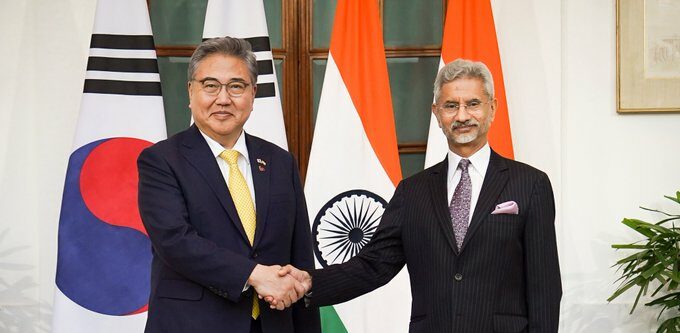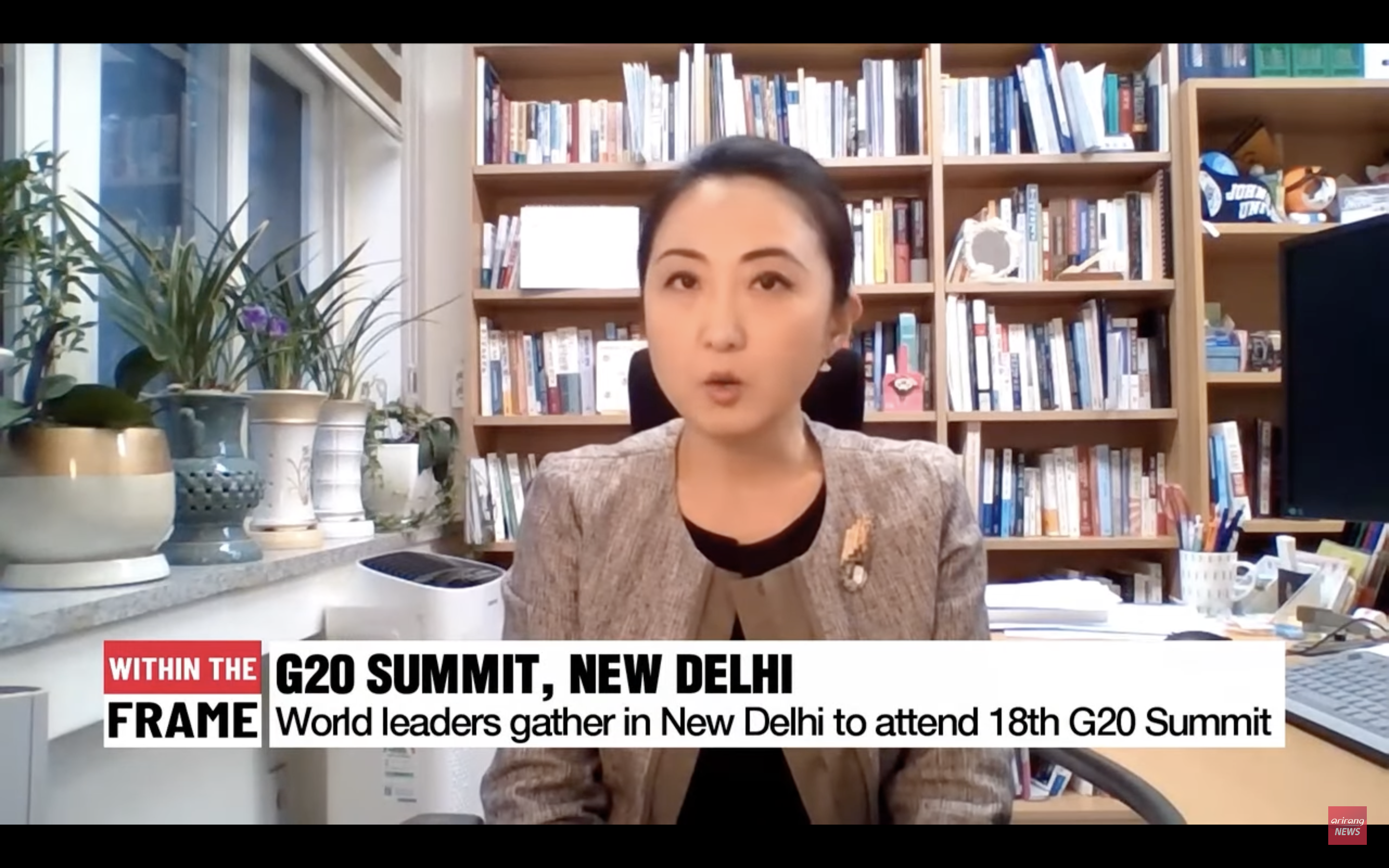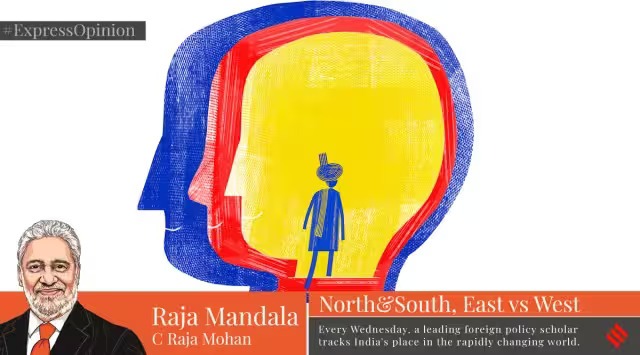India and South Korea: Identifying Common Nuclear Concerns and Approaches
KOREA ON POINT
APLN Senior Research Adviser Manpreet Sethi writes about the common nuclear concerns of India and the ROK and explores potential common positions that India and the ROK can take at the bilateral, regional, and global levels to strengthen their ability to address threats. The original post can be found on the website of Korea on Point here.
► Although India and ROK have opted for different pathways to address their threat perceptions, the commonality of nuclear threats faced by both countries is, nevertheless, striking: 1) the expanding and modernizing nuclear capabilities of China; 2) the similarity of nuclear brinkmanship strategies followed by Pakistan and DPRK; 3) the possibility of nuclear proliferation.
► India and ROK can take at the bilateral, regional, and global levels to strengthen their ability to address threats derived from common nuclear concerns by upholding the principles of non-proliferation and disarmament and maintaining the highest standards of nuclear safety and security.
► As South Korea being a US ally, and India being a state with nuclear weapons, they haven’t engaged to address common nuclear concerns so far. Still, their cooperation in nuclear dimension would be worthy in contemporary times.
India and the Republic of Korea (ROK) inhabit challenging nuclearized neighborhoods. Both are sandwiched between two nuclear-armed states – India between China and Pakistan; and ROK between China and the Democratic People’s Republic of Korea (DPRK). In both cases, China is a common threat, intensifying in perception in recent years. Additionally, China has also been instrumental in creating other nuclear powers of concern by providing material help and economic support. Meanwhile, both Pakistan and DPRK have also helped each other in their nuclear weapons and missile programs and both exhibit similar behavior of nuclear brinkmanship as part of their deterrence strategies.
Despite the commonalities of their nuclear threat environment, India and the ROK have crafted their individual ways of addressing security challenges. India found it prudent to acquire its own nuclear weapons and conducted a round of nuclear tests in May 1998 to establish credible nuclear deterrence. Never having joined the Nuclear Non-proliferation Treaty (NPT), India was not in violation of any commitment while taking this step. Meanwhile, South Korea chose to accept US extended deterrence commitments and rely for its security against nuclear threats on the American nuclear umbrella.
Over the last decade or so, however, South Korea has felt hemmed in from two sides. One, due to the growing military and nuclear capabilities of China and DPRK, alongside more assertive behavior by both; and secondly, due to an increasing perception that the US domestic politics has led to a fraying of the nuclear umbrella. This has led to nascent debates in the ROK strategic community on whether the country needs to reassess its nuclear policies. Arguments have been made in favor of getting Washington to re-position nuclear weapons which had been removed in 1991 back to South Korean territory or developing its own nuclear weapons. Interestingly, a poll conducted earlier this year by South Korea’s Asan Institute found that 64% of the public supported the country acquiring nuclear weapons, compared to 33% who don’t.
For the time being though, the US has managed to assuage Seoul’s desire for its own nuclear weapons through the recently concluded Washington Declaration. It caters to an enhanced U.S. military presence in the region, deployment of more American military assets, including SSBNs, to South Korea, and provision of greater inputs into America’s nuclear planning with the institution of the “Nuclear Consultative Group”.
Despite their having opted for different pathways to address their threat perceptions, the commonality of nuclear threats faced by India and ROK is, nevertheless, striking. Three of these are particularly noteworthy since they offer the potential to craft common positions at the bilateral, regional, and international levels.
Common Nuclear Threats
The first of these relates to the expanding and modernizing nuclear capabilities of China. Though China conducted its nuclear tests in 1964, it maintained the ideas of credible minimum deterrence and no first use for nearly six decades thereafter. However, from roughly around 2014 onwards, President Xi Jinping has shown greater focus on visibly developing the Chinese nuclear arsenal and capabilities. Accordingly, new silos were detected in 2021 leading to guesstimates about rapid changes in China’s nuclear warhead numbers. Also, missile capabilities such as their ranges, accuracy, reliability, and penetrability have been significantly enhanced. PLARF has been elevated into a full-fledged force as the custodian of both nuclear and conventional missiles.
One of the obvious reasons for these developments has been the perceived to enhance the survivability and deterrence credibility of China’s nuclear arsenal vis a vis US ballistic missile defense and ability to conventionally target nuclear assets. Fear of the degradation of its small arsenal has been the primary driver for expanding and modernizing its capabilities. But, another reason is also to gain status as an equal to Washington. It is evident from the pronouncements of President Jinping that he considers nuclear parity as an important attribute of a rule setter in the global order. Their display of greater capability has also allowed him to effectively use the coercive element of nuclear deterrence in his foreign policy. New Delhi and Seoul have experienced this behaviour – the former in the Himalayan borders; and the latter in the economic and maritime domains. Ambiguous Chinese intentions along with a clear rise in military strength and swagger are forcing both to buttress their respective military forces too.
A second common concern for India and the ROK arises from the similarity of nuclear brinkmanship strategies followed by Pakistan and DPRK. Subscribing to a risk-maximizing approach, both blatantly draw attention to their nuclear capabilities and use them for bargaining, or nuclear blackmail. Both believe that their nuclear weapons grant them immunity since the international community cannot afford to see them fail. China further emboldens its use of such tactics by blunting the force of sanctions on DPRK and the criticism of Pakistan’s cross-border terrorism. Its supportive attitude encourages its nuclear brinkmanship.
A third common risk that both nations face is that from the possibility of nuclear proliferation. Pakistan and North Korea are well known to have engaged in clandestine nuclear transfers in the 1980s-90s. Though the AQ Khan network run from Pakistan was caught in 2004, it remains unclear how, and to what extent, the existing channels of proliferation were plugged. Pakistan never allowed a proper investigation of all links. Of course, international focus on its lax proliferation record has forced Islamabad it to raise its standards of nuclear security. But, very little is known about the safety and security of nuclear material and weapons technology in North Korea. Meanwhile, terrorist organizations have mushroomed across the world and are well-networked amongst themselves. Given both these realities, the possibility of nuclear and missile proliferation from economically stressed Pakistan and DPRK to other state or non-state actors cannot be ruled out.
Possibilities of Common Nuclear Positions
In view of their common nuclear concerns, it is possible to explore common positions that India and ROK can take at the bilateral, regional, and global levels to strengthen their ability to address threats. The first point on which both sides are on the same side is on the need to uphold the principles of non-proliferation and disarmament. While the ROK does so as a member of good standing of the NPT, India supports these from the outside. Irrespective of where they stand on the NPT, both have a common desire to see North Korea’s nuclear program constrained and put under strict scrutiny of safeguards, at the earliest possible opportunity.
Both also have a common desire that the norm of non-use of nuclear weapons should not be breached. Given their common threat perception of inadvertent or accidental escalation owing to risky nuclear strategies pursued by their respective adversaries, both should find it prudent to join hands in discrediting nuclear brinkmanship behavior.
India and ROK would also equally gain if China were to agree to nuclear arms control, either bilaterally with the USA or at a more multilateral level. China’s unbridled nuclear excesses create security concerns for both and subjecting it to restraints would be a benign development for both.
Lastly, maintaining the highest standards of nuclear safety and security would also be beneficial to both countries. Both have robust nuclear power programs, and it is in their interest that nuclear industries, in their countries and elsewhere, ensure accident and incident-free safe operations. In fact, nuclear centers of excellence in both countries can offer an opportunity for joint or collaborative exploration of material, fuel, and technological research and development, including in the field of small modular reactors. It might also be worth exploring collaboration for nuclear exports. South Korea is an established and ambitious nuclear exporter. India has until now only collaborated with Russia on nuclear exports in the non-nuclear part of the Rooppur nuclear reactors being constructed in Bangladesh. The possibilities of a new partner in Seoul can be explored by New Delhi.
India and the ROK have traditionally not looked at each other from the nuclear prism. Given that one has been a US ally enjoying its nuclear umbrella, and the other is a state with nuclear weapons, they have not engaged to define common nuclear concerns or ways of addressing them. As both sides enhance their cooperation with each other in contemporary times, the nuclear dimension too has much to offer.




